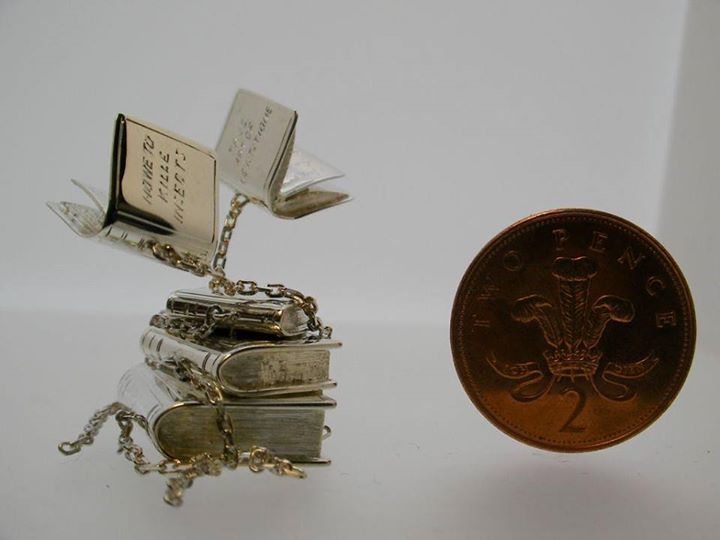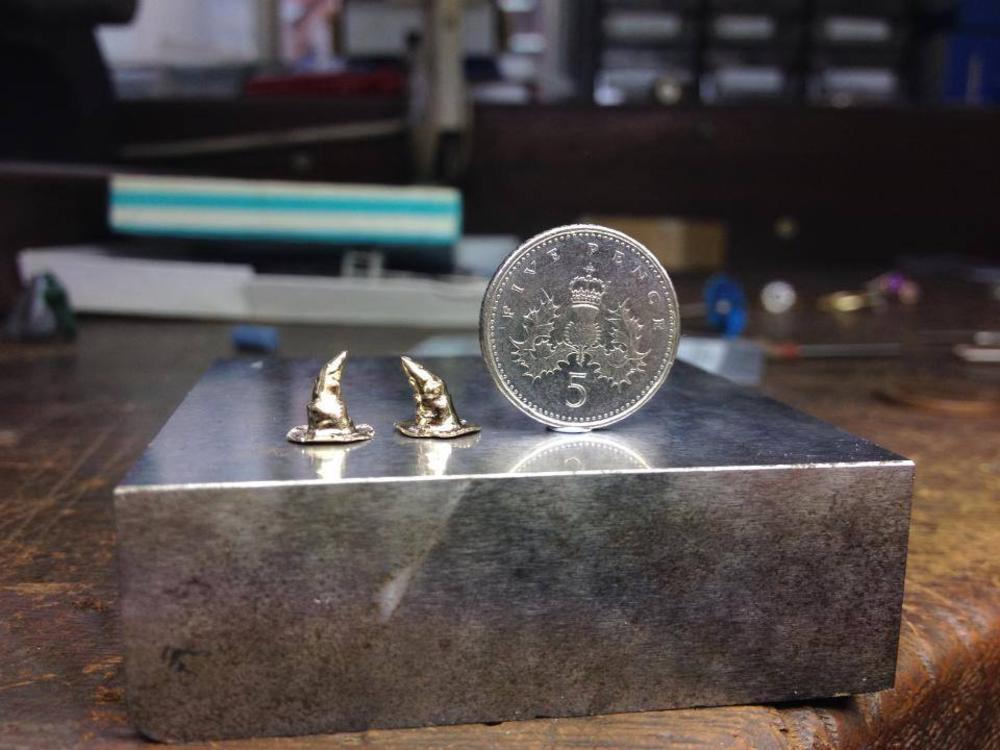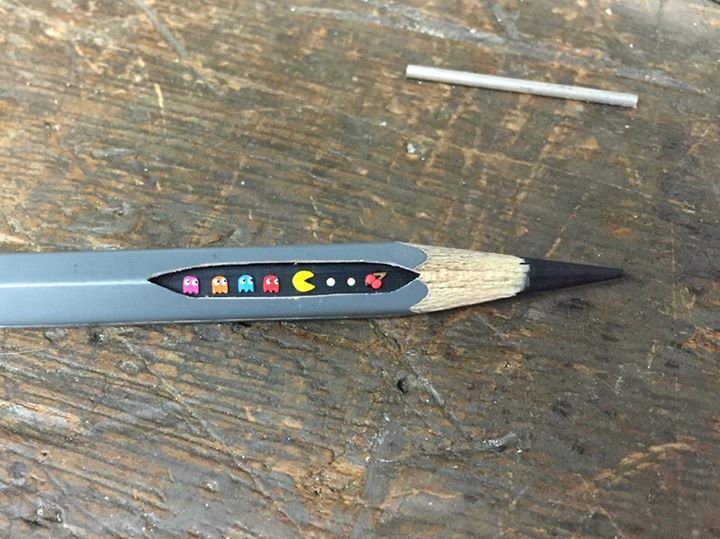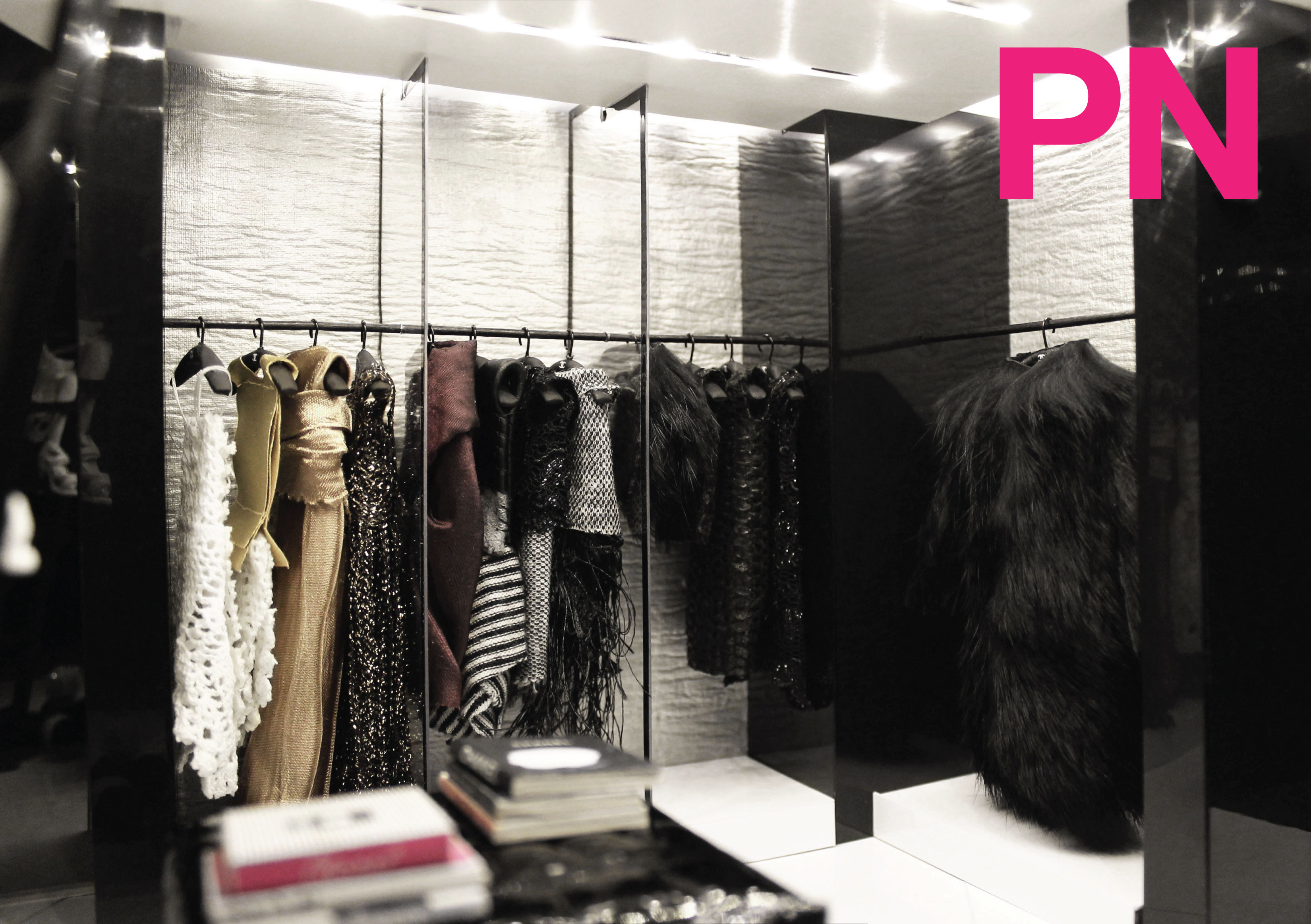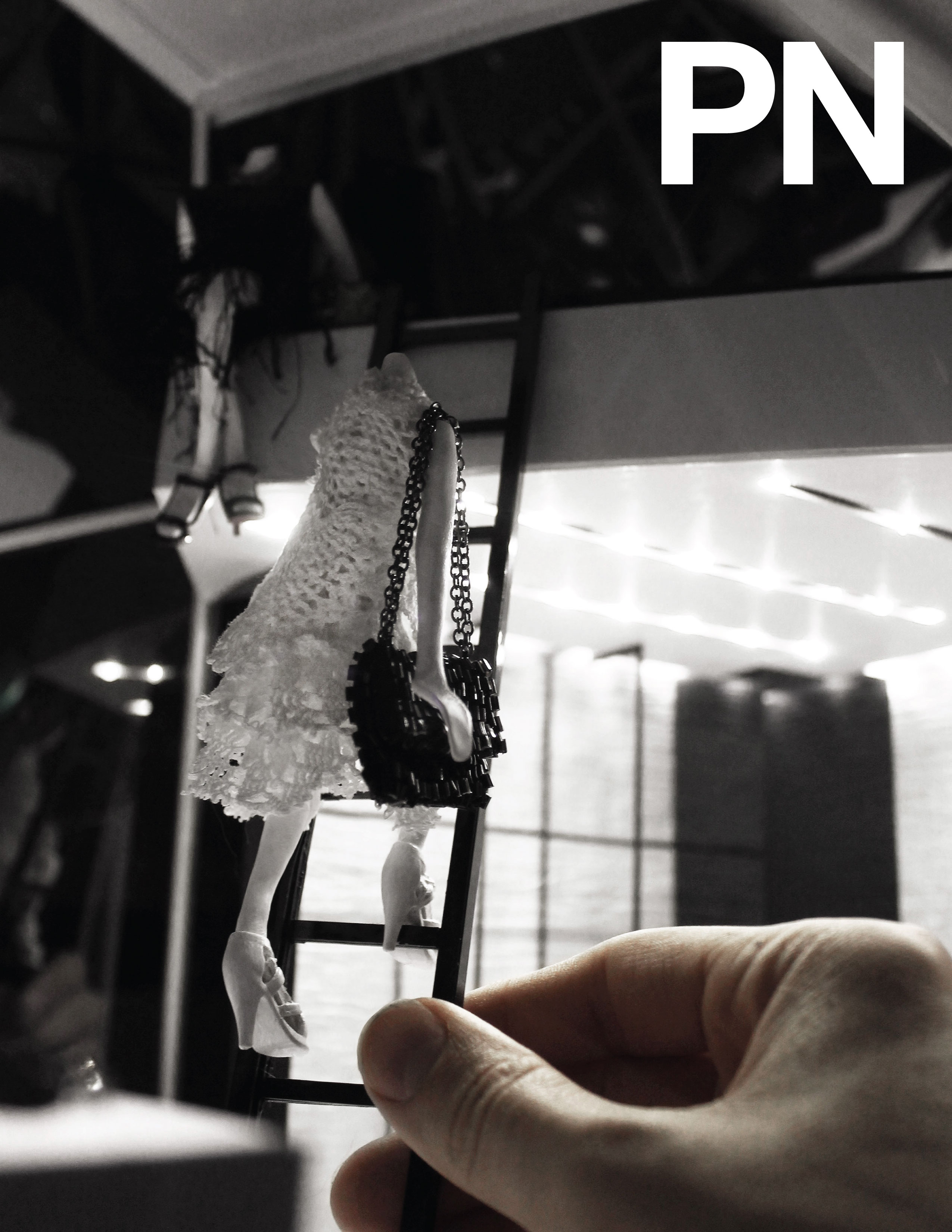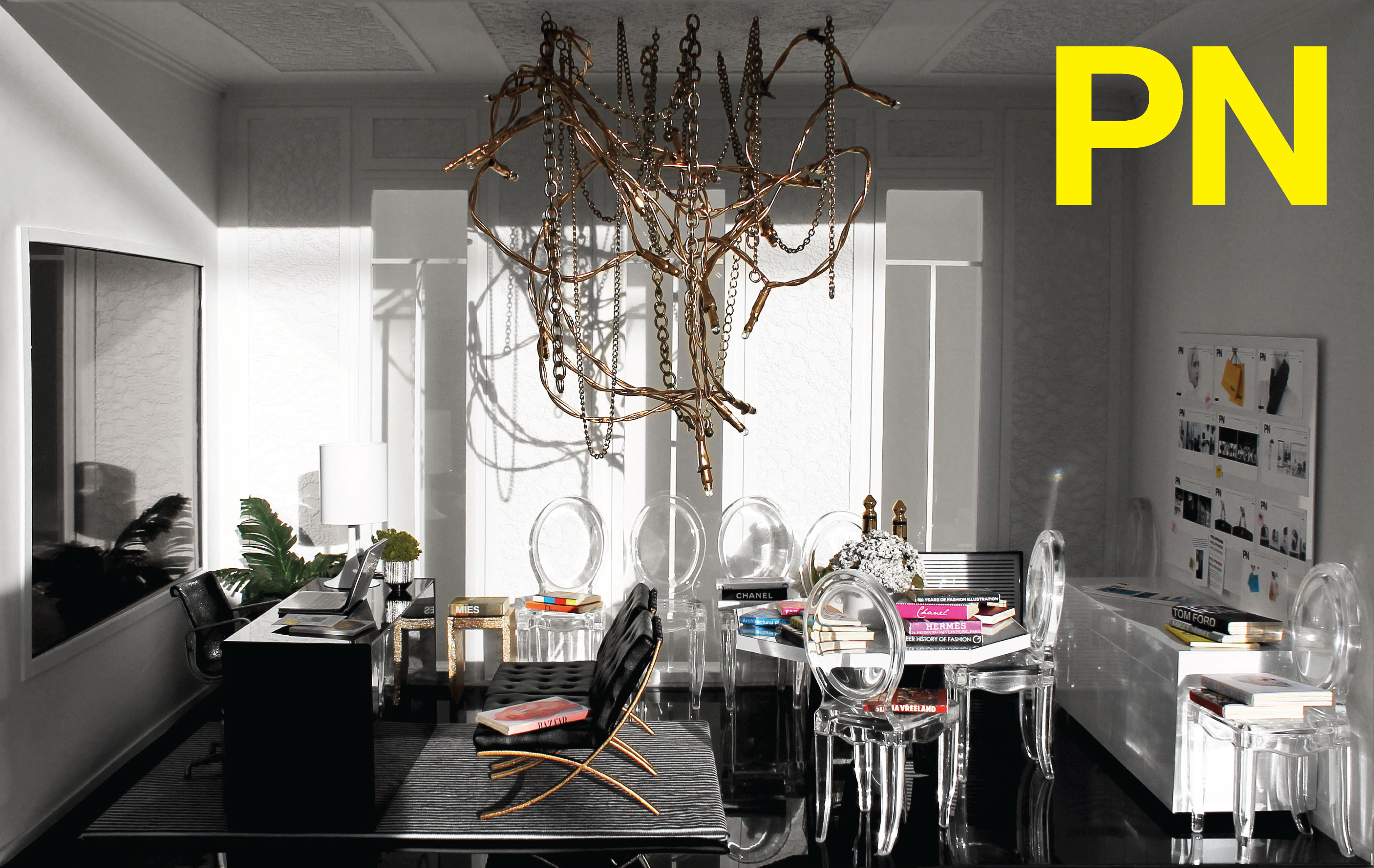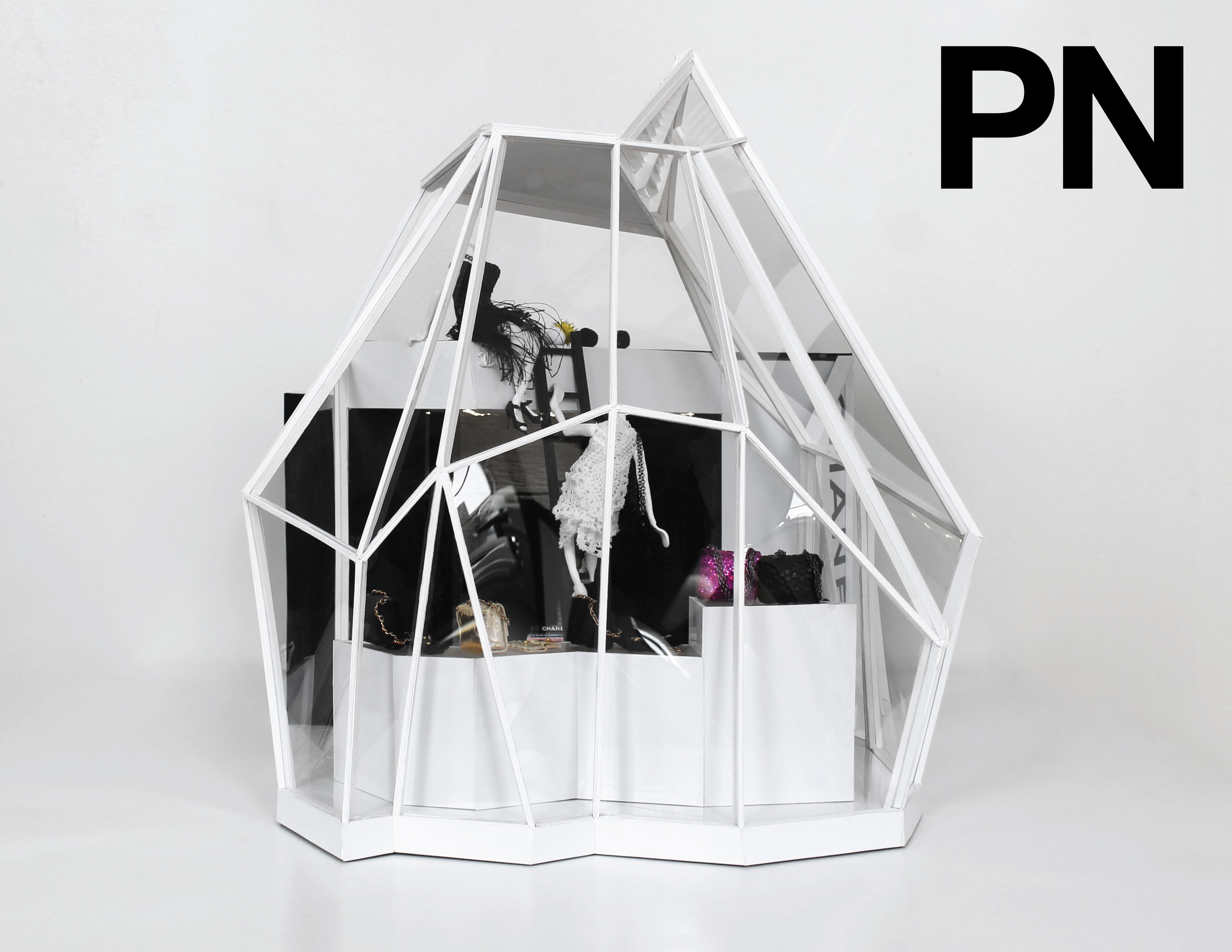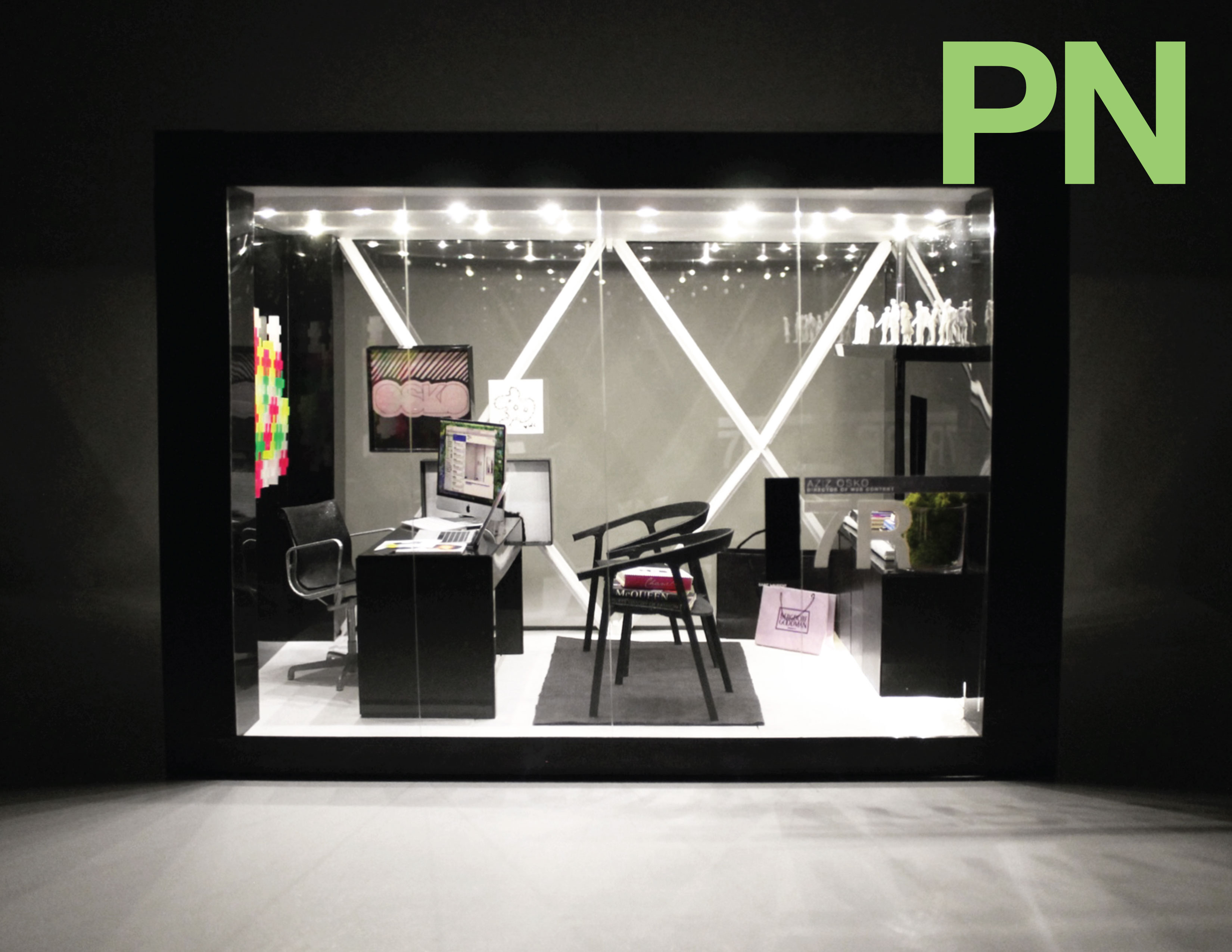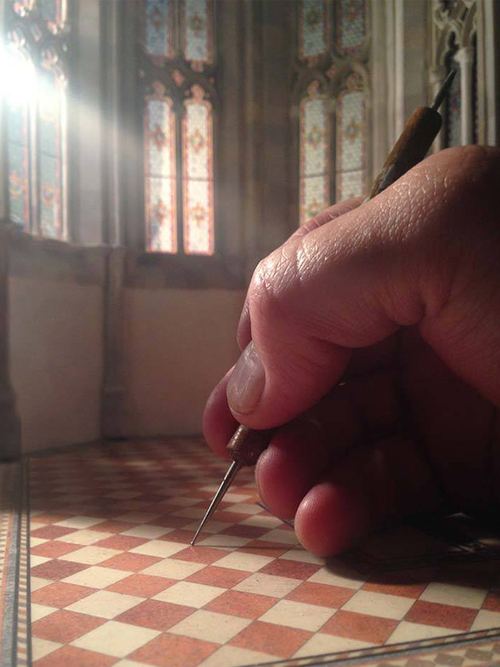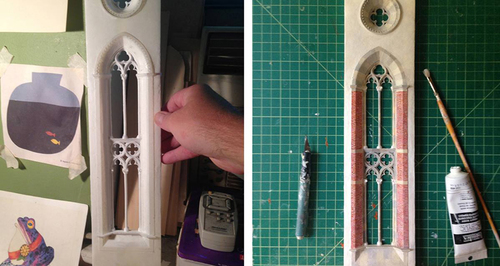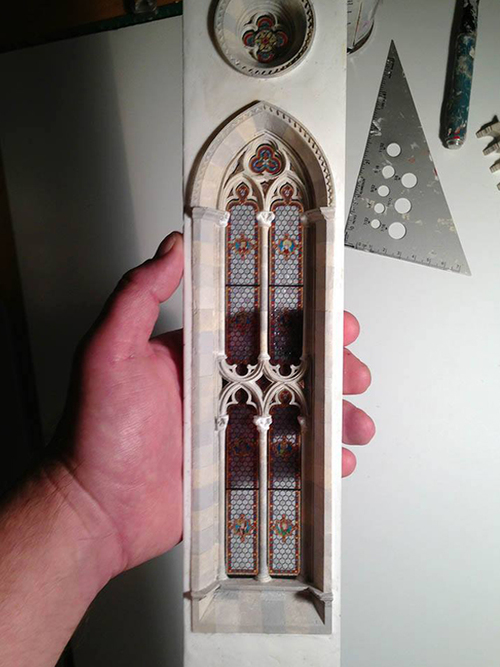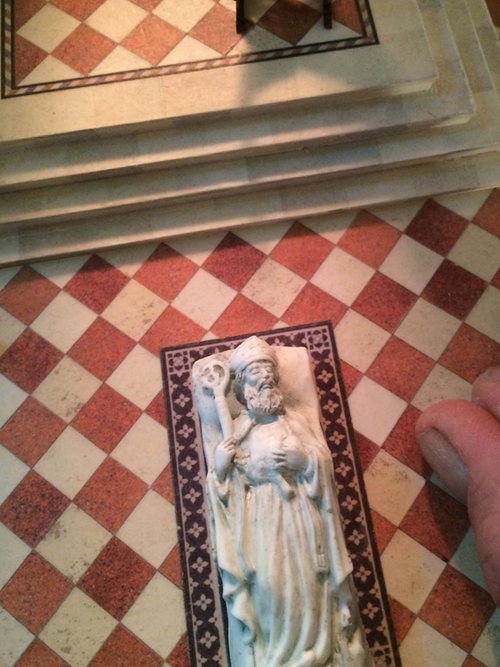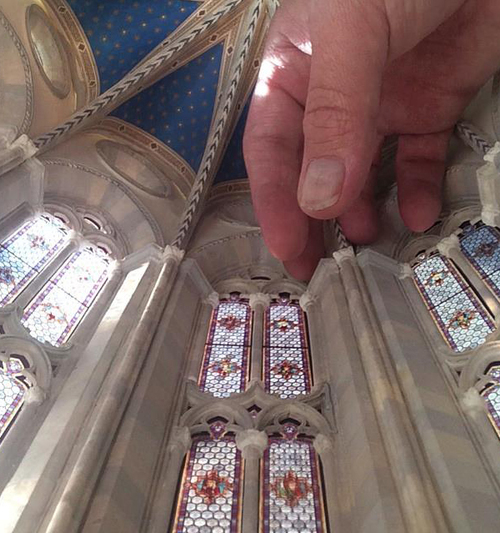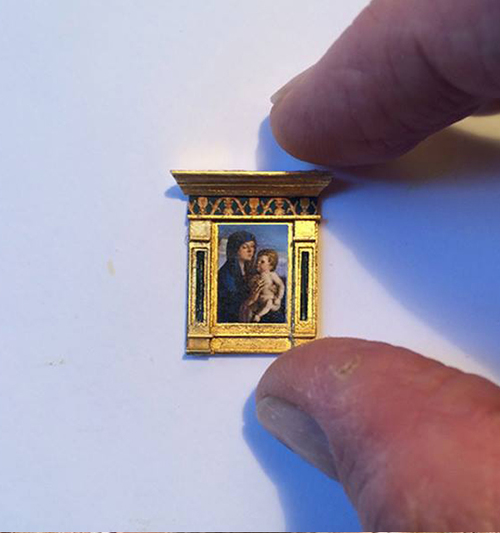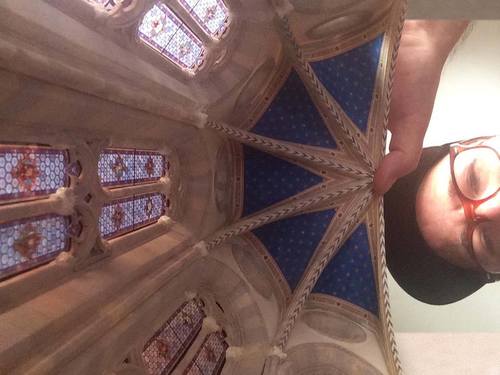Tom Lynall’s Miniature Jewelry Designs and Pencil Carvings
| Website | Facebook | Instagram |
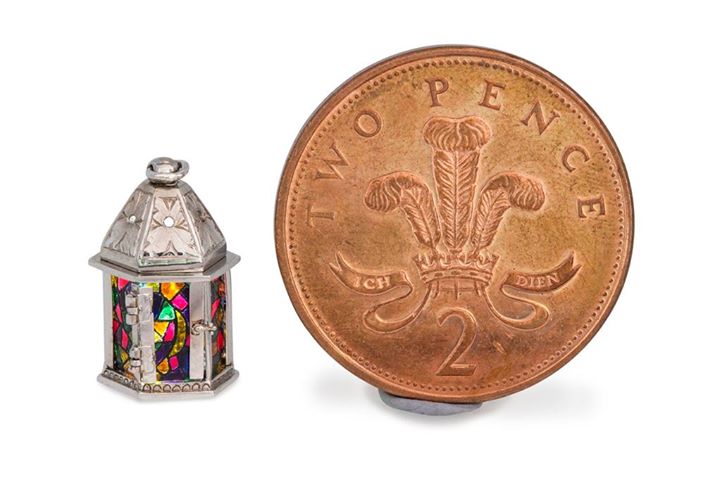 Tell us a bit about your background in jewelry design.
Tell us a bit about your background in jewelry design.
I have wanted to be a jeweler for my entire life; since I was about 4 specifically. I never really wanted to do anything else or experiment with anything career-wise. My dad’s a jeweler and he would take me to his shop, give me little jobs to do when I was a kid. I’ve loved it ever since then. I left school at age sixteen to immediately start training with another jeweler. After a few years, I left that jeweler, and would frequent my dad’s shop to create tiny models for fun. Eventually, I became qualified to work alongside my father, and I can officially say I’ve been a jeweler for twelve years now.
What’s your earliest memory with miniatures?
I can remember when I was four, I was given the duty to sort stones out by color. I enjoyed sorting through sapphires, emeralds, rubies, and more.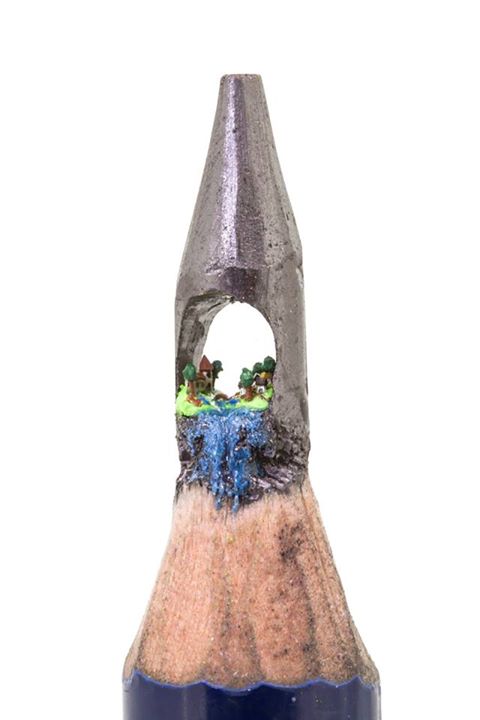
How did you get started with miniature pencil carvings?
At first, I would see pictures of pencil carving sculptures on Facebook as well as around the Internet. On the 30th of November last year, I thought I would give it a go myself. My first pencil carving was a little red heart, which I made purely because I had found a red pencil.
Do you have a favorite carving?
I created a Batman vs. Superman carving, I guess that could be considered my “favorite” since everything seemed to fall into place just perfectly for that one in a rapid amount of time.
Do you keep all your carvings?
I do keep all of my carvings, apart from a few which I have given away to people. I do not do these for money or anything, but for my own leisure.
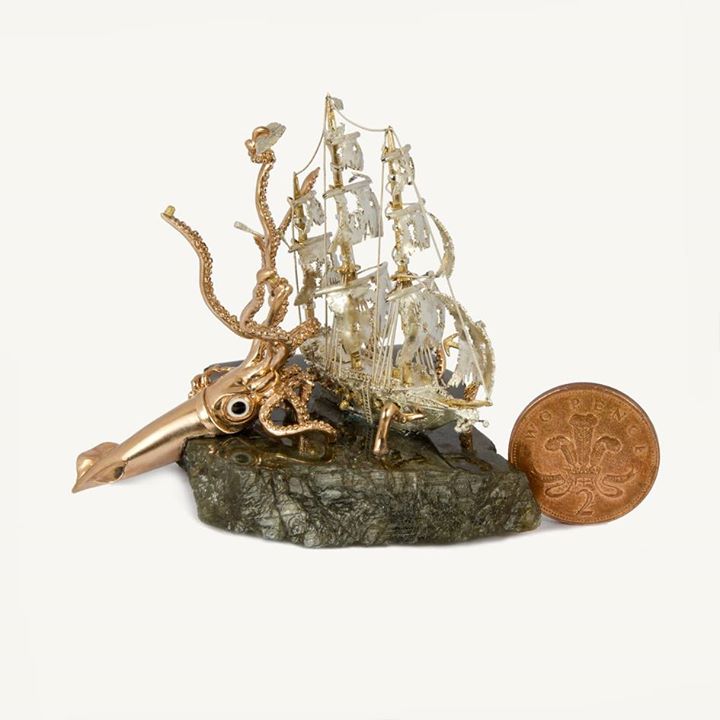 And do you have a favorite work of jewelry?
And do you have a favorite work of jewelry?
I had made a ghostship that was being attacked by a giant squid. It was a model that I had entered into a Goldsmiths competition a few years back. This piece resonates with me because it marked the first time I had ever had my work compared to others. It was also really cool because I won a Senior Modelmaker silver award, which was really special since I only made the model for a bit of fun.
How has your work with jewelry design evolved over the years?
When I had started experimenting with Discworld models, I eventually began to branch out and create more detailed pieces. I’m currently working on a commission which I can say has definitely been the biggest thing I have ever worked on: taking up over six months of my life.
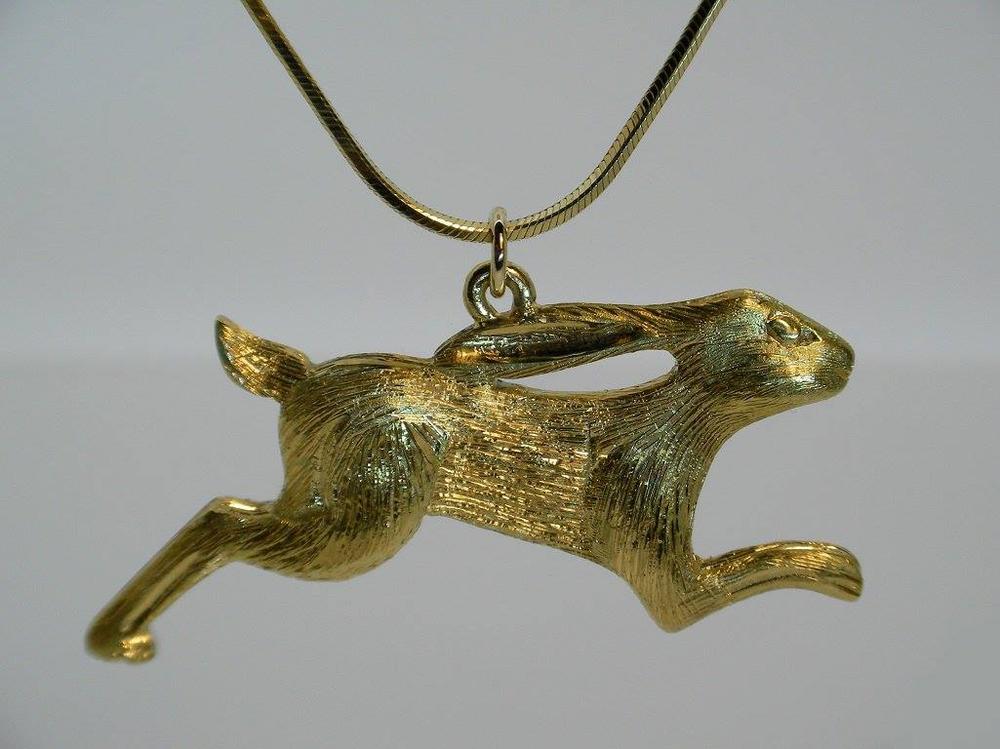 What’s a unique material you’ve used in one of your jewelry designs?
What’s a unique material you’ve used in one of your jewelry designs?
The most unique tool or material I’ve resorted to using was one of my eyelashes, which was effectively used as a paintbrush to paint a miniature stained-glass lantern.
Technique you can’t live without?
When I am doing carvings, my hands need to remain in a certain position for the process to take place. I brace my blade in a certain way to hold the pencil, so that both of my hands are braced and only the blade moves to carve most efficiently. It’s steadier opposed to your hands moving backwards and forwards when they are not braced tight enough and holding the pencil in place.
Mostly, it is seeing other things that peers make. Also, whenever someone throws out an idea that something cannot be done, it pushes me that extra bit to give it a go and see what may come of it. Willard Wigan is my favorite artist hands-down. And a recent friend.
What is the most memorable miniature you have ever seen?
The most memorable miniature I have come across has to have been something from Willard Wigan’s work. It is just nuts to say the least, in a good way. His fairy on a toadstool in particular is probably my favorite that he has done.
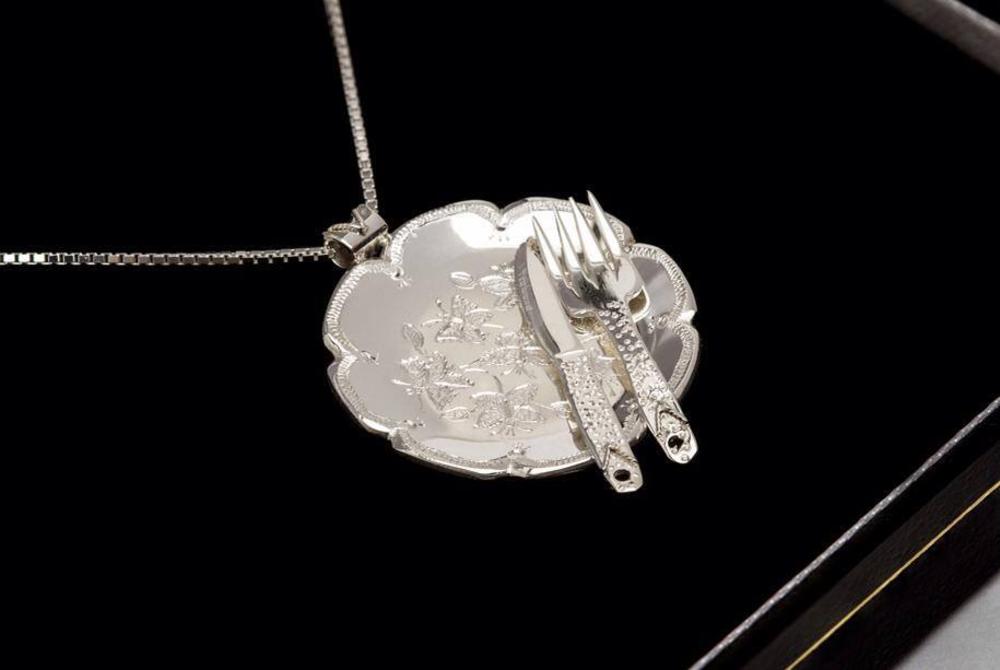 What appeals to you most about your work with jewelry design and pencil carvings?
What appeals to you most about your work with jewelry design and pencil carvings?
It’s my passion, it’s not work. It could be classified as more of a hobby, really. I just enjoy making pieces and seeing what I can come up with using my imagination and my own two hands. I’m very lucky to be in my position. I enjoy being there to lend a helping hand to a friend who may have some broken jewelry, or need something constructed as a gift for a loved one. Not to mention, it’s a huge honor to make engagement rings for couples, truly.
What’s to come from Tom Lynall?
I am on a commission at the moment–the details of which I cannot fully disclose–but I can say it will be ready by April 2016. It will truly be one-of-a-kind, and by far the most complex piece I have ever worked on. After the commission is finished, I will be primarily focusing on projects for my own interest.
Months later, I went on to complete the 1,000 heart project, which you can learn more about here: http://www.1000heartcollection.com.
I’m quite amused by juggling; it can serve as an excellent stress reliever when I need a quick break. For the past 12 years, I have done a form of gymnastics called tricking. In my spare time, Super Mario is always a fun alternative.
What do you want miniature enthusiasts to know about you?
The biggest point I’d like to get across is I don’t do what I do for profit. I find it intrinsically fulfilling. I do it for my own personal satisfaction, which to me is a much better catalyst for any artistic motivation.
Tom Lynall is a specialist bespoke jewelry manufacturer located in Birmingham’s prestigious Jewellery Quarter. Having been in the industry for over a decade, Thomas has produced high quality sliver, gold and platinum pieces to the highest quality. To see more of his jewelry designs or miniature carvings, visit his website, Facebook or Instagram.
